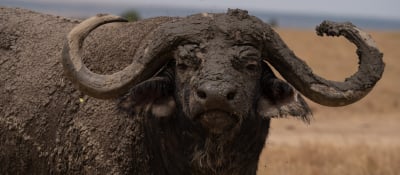INSPIRATION
5 Interesting Facts About The Great Migration

Popularly known as ‘The Greatest Show On Earth’ the Great Migration is one of the world’s most fascinating and dramatic natural phenomenons. It occurs annually across Kenya and Tanzania from July to October and is the largest overland migration on Earth. Each migration sees the collective circular movement of over 1.5 million wildebeest and hundreds of thousands of zebras, gazelles and elands. Headed down for a safari soon? Here are some fun facts to know before you go!

1. Wildebeest and Zebras: The Perfect Travel Companions
Both wildebeest and zebras are highly social animals that live in herds. About 200,000 zebras add to millions of wildebeest each year during the Great Migration. The reason for this? A symbiotic relationship. Both grazers, zebras are evolved to feed on longer tougher grass, leaving behind shorter shoots preferred by wildebeest.

In addition, the two pair well due to the excellent memory on the part of zebras.This allows them to better remember previous migration routes and areas of danger and safety. An advantage that is particularly handy as both groups cross crocodile-infested rivers.

Lastly wildebeests have a heightened sense of smell, allowing them to detect water during dry spells. This allows them to sense rain up to 15 miles away easily leading both herds to water and fresh grazing fields. Zebras on the other hand have great eyesight which allows them to spot and avoid predators guaranteeing higher survival chances for zebra and wildebeest herds.
2. Only Blue Wildebeest Migrate
Wildebeest, also known as gnus, are actually a large type of African antelope split into two species- black wildebeest (white-tailed gnu) and blue wildebeest (brindled gnu). Blue wildebeest (not actually blue) get their name from the silvery–blue sheen to their coat when seen at certain angles in the light. They are the more commonly known of the two and can be found in both Southern and Eastern Africa. Black wildebeest on the other hand, are only found in Southern Africa.

Blue Wildebeest | Image by Serengeti National Park
While both species share similar physical and behavioural traits, only blue wildebeest are known to migrate whereas black wildebeest occupy fixed territories. The blue wildebeest also inhabits woodlands and grasslands, while the black wildebeest is restricted to only open grasslands.

Black Wildebeest | Image by Kiddie
3. Perilous Crossings
The Great Migration is naturally not without risk as the huge numbers are tailed by a variety of predators and opportunists like lions and hyenas. The river crossing however, is perhaps the most dangerous and dramatic part of the journey. To get to greener pastures in Tanzania, herds cross the crocodile-infested Mara and Grumeti Rivers of the Serengeti. River Grumeti in particular is known for some of the largest Nile Crocodiles on the continent, which can grow to a whopping 500-750kgs.

Tip:
The Grumeti River Crossing occurs for a brief 1-2 week window between May and June (ideal for low season travellers) while the Mara River crossing usually occurs during the busier dry season from mid June to September.
If you’re looking for better viewing opportunities and more dramatic flare then a Mara River Crossing is certainly for you. This is mainly because crossings happen more frequently and also tend to be more dramatic as the river is lined by steep banks and has a faster current unlike the calmer Grumeti. Accommodation is also better established in the areas surrounding the Mara River, with more options for every budget.

Crocodile AttackingWildebest | Image by Discover Africa
4. Wildebeest Calves Can Run Just Days After Birth
Female wildebeest pregnancies last for 9 months. They give birth in the middle of the herd for safety with 80% of calves are born 2 to 3 weeks before the rainy season. This is to ensure there is enough food for for the calves’ development. During their first few months, calves will suckle milk from their mothers. Their diets are milk based with grass 10 days after birth. In order to keep up with the fast pace of the plains, calves are also born precocial and can walk soon after birth. A few days later they then start running with the rest of the herd.

Wildebeest Mother and Calf
Being the most vulnerable group during the migration, only one in three calves will make it back alive in a year to the Serengeti’s southeastern plains.
5. Scent Trails
Research shows that wildebeest have scent glands on their hooves to leave trails for members of the herd as groups migrate. This is necessary as the Great Migration doesn’t consist of one solid herd but a main herd and satellite herds that merge and separate throughout the season. The group is at its most cohesive during calving season (from late December to early March) when all the wildebeests gather in the Serengeti’s southeastern grasslands seeking protection from predators in numbers.

Image by Martin Harvey
Planning to See The Great Migration? Find Some of The Best Places to Stay in the Maasai Mara
Our Top Experiences
SEEN SOMETHING YOU LIKE?
Enquire now and our team will create a custom itinerary tailored to your preferences.

CONTACT
enquiries@nomad.africa
Tel: +254 708 238 738
Purple Nomad Ltd
PO Box 69671 - 00400
Mwanzi Avenue, Nairobi, Kenya



